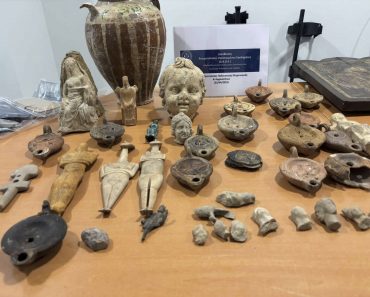A shipwreck dating back over 2,300 years continues to shed light on ancient Greek shipbuilding and maritime trade, thanks to groundbreaking archaeological research and a revised scientific dating method.
The Kyrenia, a 4th-century BC Greek merchant vessel, was discovered off the north coast of Cyprus in 1965 by diving instructor Andreas Cariolou and excavated between 1967 and 1969 by a team led by Michael Katzev from the University of Pennsylvania.
Measuring approximately 47 feet long and 14.5 feet wide, the vessel had a single square sail and was crewed by four men. It sailed the Mediterranean during and after the time of Alexander the Great and likely sank due to structural fatigue after more than two decades of commercial use. Extensive repairs, including hull reinforcements and mast relocations, suggest efforts to prolong the ship’s operational life despite increasing frailty. The ship—exceptionally well-preserved with over half of its hull timbers intact—is displayed at the Shipwreck Museum in Kyrenia Castle.
Now, a team led by Sturt W. Manning of Cornell University refined the dating of the Kyrenia. Their findings, published on PLOS One indicate that the ship sank up to two decades later than earlier estimates, which had placed the shipwreck between approximately 294 and 290 BC.
The research team used radiocarbon dating, which measures how much carbon-14 is left in the wood to estimate its age. But there was a problem: much of the Kyrenia’s wood had been preserved with a chemical called PEG (polyethylene glycol), which made it difficult to get accurate results. PEG can introduce additional carbon into samples because it is made from petroleum, which contains no radioactive carbon. To address this, the scientists used a specialized cleaning method to remove the PEG. They validated the approach by testing it on other PEG-treated wood samples of known age.
The team also developed a new version of the radiocarbon calibration curve for the period around 300 BC, since the existing version had gaps and relied on outdated data. They built this revised curve using tree rings from trees of known age, allowing for more precise dating.
An important archaeological clue also supported the new findings: the Kyrenia Ship didn’t carry any of the newer styles of Rhodian storage jars (amphorae) that became common after around 270 BC.
Thanks to these scientific advances and artifact clues, the researchers proposed a revised timeline for the ship’s sinking—placing it anywhere from the early 280s BC to, at the latest, 270 BC.







